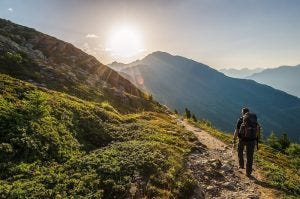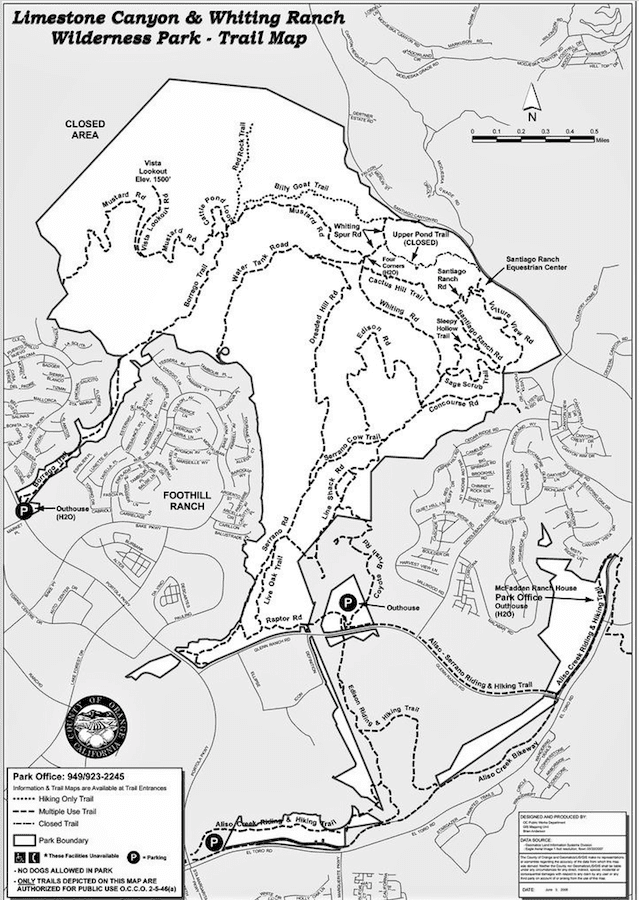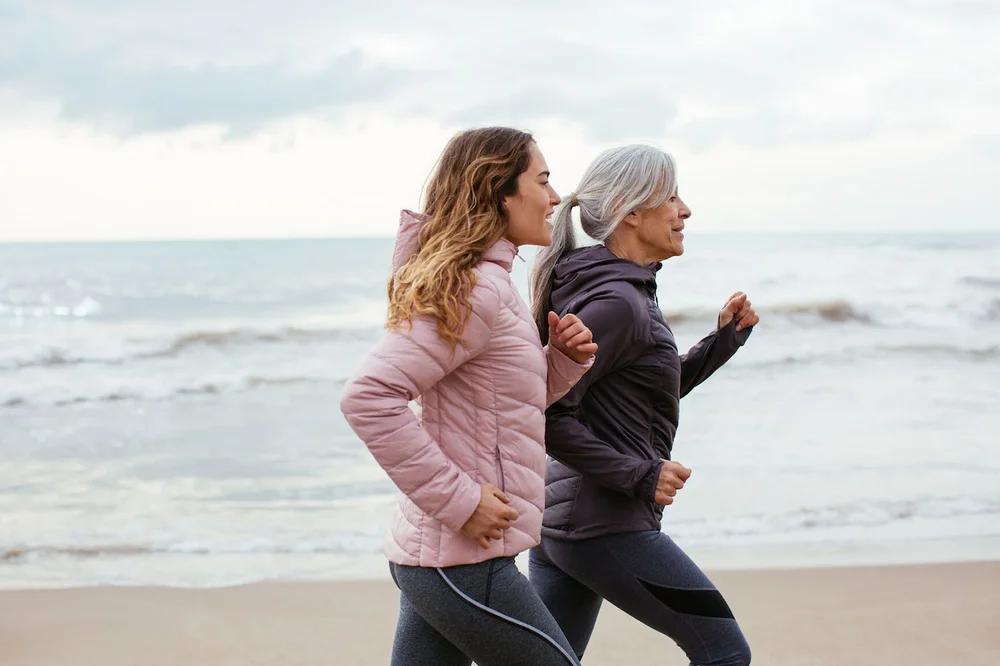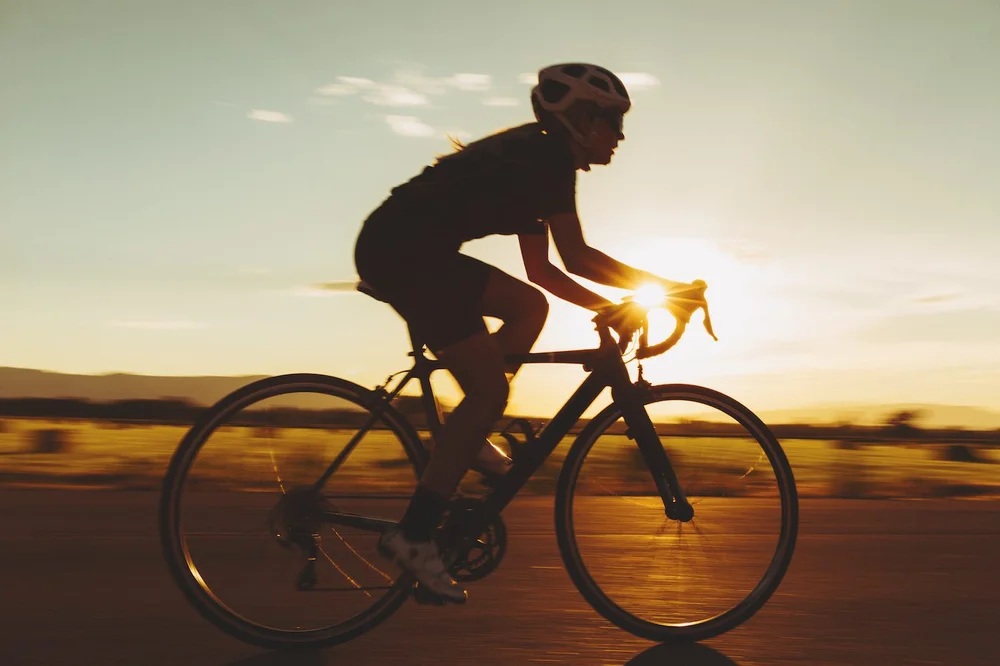Hiking 101: How to Stay Safe While Enjoying the Great Outdoors
As we enter the warmer months, many of us are ready to shake off the effects of winter hibernation and get outside for some fun in the sun.
While there are plenty of outdoor activities to choose from – rollerblading, mountain biking, surfing, rock climbing, etc. – my favorite is hiking.
The Basics of Hiking
Hiking can be enjoyed by a wide range of people and requires no special skills. However, hiking is a widely misunderstood activity since it involves far more than just walking up and down hills.
It normally takes place on nature trails or in wilderness areas maintained by National Park Services or local municipalities. Though topographical features vary by region (mountain, desert, costal, etc.), the hiking experience should be similar regardless of where you live.
Hiking is a weight-bearing exercise, meaning you carry your own weight up hills. This can help burn calories and strengthen your muscles, such as your glutes, quads, calves, and hamstrings. There’s also a way to exercise your upper body on a hike (see: Trekking Poles).
Since it requires minimal equipment, hiking is a fairly inexpensive activity.
Benefits of Hiking
Hiking offers both physical and mental benefits. Hiking is a great way to:
- get outside for some fresh air
- improve cardiovascular fitness and heart health
- get appropriate levels of vitamin D3 from sunshine
- cross train for athletes
- burn calories/shed pounds
- build stronger muscles and bones
- improve your sense of balance
- strengthen your core
- enjoy time with family and friends
- enhance mood, reduce stress, and perhaps even improve memory
Ongoing research suggests that hiking also can help reduce the risk of various long-term health issues.
Solo or Group?

Another advantage of hiking in a group is that there’s strength in numbers. If a large cat, bear, or other predator is on the prowl, it probably will avoid a group of people, especially if they’re talking or making loud noise.
Also, walking in a group can be a major advantage if you should encounter an unexpected setback (i.e., one person runs out of water, another sprains an ankle, etc.), as others in the group can offer assistance to those who need help.
What to Bring
Though the local terrain and climate may determine certain items you bring, here are some of the basics you should consider taking on your hike no matter where you live…
Water Bottle
This is the most important thing to take on a hike.
Running out of water can lead to dehydration, heatstroke, and even death (as sadly happened to a friend of mine). Always take MORE water than you think you need, especially on hot days. Having extra water at the end of your hike is far better than running out.
If carrying a water bottle becomes burdensome, store your bottle in a backpack. Also, some backpacks come with a water bladder and drinking hose. Though this adds more weight to your shoulders and back, it frees your hands from carrying a water bottle.
Tip: In general, you should drink an additional liter of water for every 4 to 5 miles you hike. You may need to increase this in arid regions or on hotter days.
Hiking Boots
While you certainly can wear tennis shoes on hiking trails, it’s recommended that you invest in a nice pair of hiking boots. Many options are available at outdoor outfitters like Big 5 Sporting Goods, REI, or DICK’s Sporting Goods.
Hiking boots have a much thicker sole and heel than tennis shoes and some have ankle padding. This added support should prevent you from twisting your ankle on rocky terrain, and from developing plantar fasciitis or other types of foot pain.
Tip: This is one item where quality really matters, so don’t purchase a cheap brand. A good pair will be very durable (I’ve purchased two pair in the last decade).
Backpack
Though some people may find the additional weight on their shoulders to be uncomfortable, taking a backpack on a hike can be helpful in many ways.
An obvious benefit is that carrying more weight will make your muscles work harder, which will help you burn more calories. Wearing a backpack can also provide a good workout for your abdominal and back muscles.
The list of items you can store in a backpack is extensive. In addition to water/water bottle, you might include a pocketknife, flashlight (and extra batteries), fire starter and matches, map, compass, first aid kit, basic sanitary supplies, and a bag for trash.
Packing a lightweight windbreaker or raincoat might be a good precaution if the weather in your area can suddenly turn inclement. If you have room, you may also pack a change of clothes or a spare pair of socks should your feet get wet.
Also, keep sunscreen and bug repellant in a Ziplock bag in case of spills.
Tip: If you enjoy moments of contemplation at scenic overlooks, you might pack a small journal and pen, Bible, or other inspirational reading material. However, if these items add too much weight to your backpack, you can access electronic versions of them on your cell phone (make sure you don’t use up your battery, though).
Trekking Poles
A piece of equipment often overlooked by hikers is trekking poles. Despite the reservations some have over appearances or comfort, there are numerous benefits to walking with trekking poles (or a single hiking staff).
In addition to providing greater stability on uneven trails, poles can help improve posture, which in turn helps breathing. They also can help reduce stress on your back and knees when going up or down steep hills. Walking with poles can help you burn more calories and build muscles in your arms, shoulders, and neck.
Another benefit of walking with sticks is protection. You can bang the poles together to warn off critters. In extreme situations, you can use the poles as a means of self-defense.
Tripping over rocks or slipping on loose gravel or mud is common on hikes. Trekking poles have kept me from doing a faceplant at least a dozen times.
Tip: Purchase a pair of adjustable poles and make sure to fit them to a comfortable height (when holding the poles with tips in the ground on the outside of your feet, forearms should be at a 90-degree angle to your upper arm). Also, for those in warmer regions, cork handles are ideal for wicking away sweat and providing a firm grip.
Sunscreen
One benefit of engaging in outdoor activities is that you can get some much-needed sunshine. But there’s a danger of getting too much sunlight, specifically exposure to harmful UV rays. Be sure to monitor how much sun you’re getting – too much exposure can lead to severe sunburn and serious skin conditions.
Before embarking on a hike, remember to apply sunscreen. Make sure to cover areas that tend to burn the easiest: face, ears, neck, and limbs. Remember to bring along some sunscreen in case you need to reapply after a few hours.
For sufficient protection against damaging sun rays, it’s recommended to use SPF 30 or higher.
Tip: Just as there’s a danger of getting too much sunlight, there’s a downside to using too much sunscreen, which can prevent your skin from absorbing adequate sunlight and may lead to vitamin D depletion. Unfortunately, vitamin D deficiencies are becoming more common, in part because we’re spending more time indoors and wearing more sunscreen when having fun outdoors. Taking a vitamin D supplement is a great way to ensure you have sufficient levels of vitamin D3.
Cell Phone
Cell phones are indispensable on hikes. They can provide useful information, such as the current time and temperature. You can use a GPS app or access trail maps on the internet if you need to get your bearings.
There are a variety of cell phone apps or fitness trackers that can register how many steps you take and how many calories you burn on a hike. You also can use a smartphone to take pictures or videos of animals or beautiful vistas.
Most importantly, you can call for help if you have an emergency (make sure your battery is fully charged and that you have cell service).
Tip: Periodically check your phone to make sure you have cell service (and how strong the signal is – indicated by the number of bars). If you roam outside of cell phone range, make a mental note (or mark it on a map) and do your best to reach a spot that has cell service. Remember these cell service dead zones for future hikes to avoid being outside of cell range.
Healthy Snacks
Two popular snacks often taken on hikes are trail mix (gorp) and power bars. While generally considered healthy, these snacks may contain unhealthy elements (like M&Ms) or added sugar.
As an alternative, consider packing healthy snacks. Put celery slices, snap peas, or baby carrots into snack bags. Whole foods – such as oranges, apples, or bananas – are super portable since they come in their own containers.
Grab a handful of seeds (pumpkin, sunflower) or nuts (almonds, cashews, walnuts) for a fiber-packed snack.
Tip: High-protein foods will give you more energy and high-fiber foods will help you feel full longer. Fiber must be taken along with protein to ensure a balanced, nutritious meal. While on the trail, eat a healthy snack every 2 hours or as often as you feel hungry.
Difficulty Ratings

In the same way, hiking trails are rated Easy, Moderate, and Difficult (alternate rating systems exist).
Difficulty levels for hiking trails involve many factors and no two trails are alike. Hiking trails are rated based on several criteria including distance (number of miles) and grade (the steepness of the trail).
Here are the basic descriptions of the three main types of hiking trails:
- Easy – 1-2 miles with easy terrain and gentle elevation changes.
- Moderate – 2-4 miles with varied terrain and gradual elevation changes.
- Difficult – 4 or more miles with challenging terrain and significant elevation changes.
It’s always a good idea to have a park map (physical or electronic) on hand so you’ll know the layout of the trails you take (here’s a map of one of my regular hiking areas). Some nature parks or wilderness areas have the trail name, distance, and difficulty level printed on poles at trail intersections, but such markings aren’t universal.
Trail Etiquette
Although there isn’t a fixed set of rules to govern trail etiquette, many good hiking habits involve a general respect for others and the environment. Some things, like repackaging your food (i.e., putting granola in a plastic bag instead of packing the whole box) to prevent waste, should be common sense, but other habits might not be as obvious.
Here are just a few “best practices” for how to protect nature while enjoying it…
Good Hiking Habits: 6 of the Top Tips for the Trail
1. Stay on the Trail
Straying from the trail can invite encounters with critters and increase your chances of getting bit by a tick or rubbing up against a toxic plant. Also, veering from the main trail, even if you take a deer or rabbit trail, can have a negative, long-term impact on the habitat.
On one hike a couple of years ago, I took a side path to get a better vantage for a picture. After taking 3-4 steps, I heard a snake’s rattle and immediately headed back to the main trail. I learned the principle of this section’s title the hard way.
2. Yield to Others
Many trails are multiple-use trails (bikers, hikers, horseback riders), which means you may need to yield to others if the path narrows. Since those on foot are slower than those on a bike, it’s customary for hikers to move to the edge of the path and wait for others to pass. When in doubt, always yield.
(Note to mountain bikers: please be courteous to hikers and inform them if there are others in your group, i.e.: “two more,” or “last one.” This protects the hiker from moving back into the path of another biker – I almost got wiped out this way one time.)

Stay alert to everything around you. This includes other people, animals, weather conditions, and terrain. I’ve made it a habit to shift my attention between the trail in front of me (searching for rocks, pits, obstacles, snakes, etc.) to the sides of the trail and off in the distance (for deer, cats, or anything else of interest) every few seconds.
In addition to what you see, what do you hear or smell? Hiking is a much richer experience when you engage the senses. For this reason (in addition to safety concerns), I’m not a fan of listening to music while out in nature.
4. Pack Your Trash
Part of trail etiquette is to leave nature in the same condition that you found it. Bring a trash bag for wrappers or containers. Be sure to leave nothing but your footprints so other hikers, and future generations of hikers, can enjoy our trails.
5. Group Guidelines
When hiking in a group, it’s best to walk single file to allow bikes or faster walkers ample room to pass. Movement on the trail is the same as driving a car (in the U.S.) – keep to the right and pass on the left.
Although the tendency in many groups is to use the outdoor excursion as a chance to chat, resist the urge to turn your hike into a social outing. First, if you’re engaged in conversation, you might not be listening to what’s going on around you; this might invite danger or distract you from noticing something unique.
Also, speaking loudly or laughing may scare off friendly wildlife, which may reduce your chances of spotting or photographing animals.
6. Hands Off
After a day of exploration outside, many kids return home with their pockets loaded with rocks (or reptiles). Don’t do that on the hiking trail. If you see something interesting, take a picture and leave it there.
Although the temptation can be great, don’t pick beautiful wildflowers. Don’t draw/write on rocks or other objects and don’t carve symbols or your initials into a tree.
Oh, and it should go without saying, but don’t touch the wildlife (nature isn’t a petting zoo).
Here are some other Leave No Trace tips for how to have as little impact as possible on the environment when hiking.
Trip Types
Hiking trips generally fall into one of four types:
- Out-and-Back Trip – as its name suggests, this trail ends at a designated turnaround and the only way to proceed is in the direction you came.
- Loop Trip – this trail begins on one path and returns by another, often with little or no retracing of the first trail.
- Shuttle Trip – many routes begin at one trailhead and end at another. Due to the distance involved, it may be necessary to park a car at the ending trailhead and take a shuttle to the beginning trailhead.
- Choose Your Own Trip – since many wilderness areas have a network of trails, it’s possible to create your own journey by taking a series of connecting trails. If you choose this option, it’s a good idea to determine in advance which route you’ll take.
Keep in mind estimated times and difficulty levels when selecting any of the above options.
File A Flight Plan
Just as a pilot files a flight plan before taking off in a plane, it’s crucial that you make a plan before embarking on a hike (this is especially true for solo hikers).
Before heading out, determine what wilderness area you’ll visit, which trails you’ll take, what time of the day you’ll start, and roughly what time you’ll finish your hike (I always end my hikes well before dusk, which is typically when cats come out to hunt).
Always check the weather forecast before hitting the trail. Also, continually monitor the weather while you’re on your hike as temperatures can rapidly heat up or cool down in certain regions.
It’s recommended that you file your flight plan with a friend or family member, especially if you’re hiking solo or if you’ll be out of cell range for any portion of your hike. If you become lost or injured on the trail, this step might just save your life.

Photo Courtesy of Keith Rowe
Keep Your Eyes Open
Before venturing outdoors, familiarize yourself with the potential hazards that exist in your area.
For instance, do you know how to identify/avoid poison ivy, poison oak, and other harmful plants?
Are there any cats you should be aware of (where I live, in Southern California, I need to keep an eye out for bobcats and mountain lions. Fortunately, I’ve only seen the former…from a distance)?
Do you know the difference between non-venomous snakes and rattlesnakes? If there are poisonous snakes where you live, can you identify them by sight (in SoCal, there are three types of rattlesnakes to be wary of, but I’ve only encountered two: Southern Pacific and Red Diamond rattlesnakes. I ran into this adult Red Diamond on the other side of the street from a row of restaurants. Frightening!)?
Are there other regional animals you need to be mindful of, such as alligators, and cougars, and bears, oh my! What about ticks? Or mosquitos? Or bees?
Equally important to identifying a critter is knowing what to do when you encounter it. Do you know when a snake is about to strike? What should you do if you spot a cat?
At the risk of belaboring the point, it’s a good idea to learn about potential dangers before you set out on a nature trek. National Parks or wilderness areas often have signs or posters with these precautions at trailheads (of course, you can also find this information online).

Photo Courtesy of Keith Rowe
Discover Nature
Fortunately, there are also many beautiful and benign things to see on a hike. If you enjoy trees, wildflowers, birds, animals, or even clouds, there’s sure to be a variety of each visible on your walk. Many websites can help you identify, and provide detailed information about, what you find in nature.
If you’re serious about spotting or photographing wildlife or other natural subjects, bring along a pair of lightweight binoculars or a digital SLR camera. Though their range is limited, cell phones can take excellent nature shots, as well.

Photo Courtesy of Keith Rowe
Serenity and Serendipity
Aside from its physical benefits, hiking can be an incredibly satisfying and spiritual experience. Enjoying nature can help reduce stress, improve your mood, and change your perspective.
Since walking helps increase blood flow to the brain, I often find that my thinking is clearer when I’m out on the trail. This helps me forget my worries and focus on nature and the things that are important in my life. Also, I’ve been inspired with many amazing ideas while on a hike.
It’s also possible to have a moment of serendipity while hiking. This could include spotting an animal, like a deer or hawk (seeing a blue bird or great white heron always makes me happy), or taking in a majestic vista.
Sometimes you’re in the right place at the right time to see something spectacular, like when I snapped this photo of altocumulus standing lenticular (flying saucer) clouds hovering above the Saddleback Mountain range.

Photo Courtesy of Keith Rowe
Adventure Awaits
As we’ve seen, there’s a lot more to hiking than just walking up and down hills. Many little things go into making a successful and enjoyable hike.
Hiking can be a healthy and fun activity. It also requires some planning and comes with certain cautions, as detailed above.
Following these tips can help you have a safe and satisfying experience in the great outdoors.
Happy trails!
At BrainMD, we’re dedicated to providing the highest purity nutrients so you can do the things you love. For more information about our full list of brain healthy supplements, please visit us at BrainMD.




Another pretty well established tenet of trail etiquette:
Downhill hikers YEILD to uphill hikers.
This way uphill hikers don’t lose their cardio push/momentum while they are working hard. Saves so much confusion.
Good article! Hiking is probably my favorite thing to do.